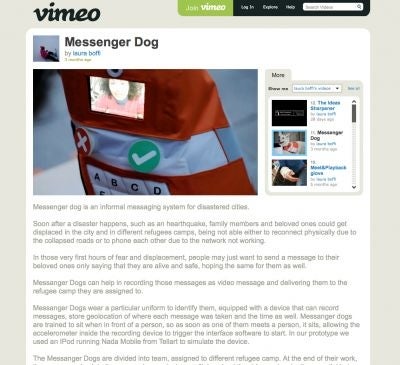Your support helps us to tell the story
From reproductive rights to climate change to Big Tech, The Independent is on the ground when the story is developing. Whether it's investigating the financials of Elon Musk's pro-Trump PAC or producing our latest documentary, 'The A Word', which shines a light on the American women fighting for reproductive rights, we know how important it is to parse out the facts from the messaging.
At such a critical moment in US history, we need reporters on the ground. Your donation allows us to keep sending journalists to speak to both sides of the story.
The Independent is trusted by Americans across the entire political spectrum. And unlike many other quality news outlets, we choose not to lock Americans out of our reporting and analysis with paywalls. We believe quality journalism should be available to everyone, paid for by those who can afford it.
Your support makes all the difference.Students at the Copenhagen Institute of Interaction Design (CIID) have developed a graphical user interface that uses trained dogs, video cameras and an informal messaging system to help people in the hours after a life-threatening situation.
The project, called Messenger Dog, was developed by product and conceptual designers Laura Boffi, Mary Huang,and Li Bian.
The informal messaging system can be used in the hours after a disaster, helping stranded civilians get in contact with their friends and family with a short, geolocated video message. A trained messenger dog wears a brightly colored jacket that plays music to get people's attention.
"Messenger Dogs wear a particular uniform to identify them, equipped with a device that can record messages, store geolocation of where each message was taken and the time as well," explains Laura Boffi on her Vimeo Messenger Dog website.
"Messenger dogs are trained to sit when in front of a person, so as soon as one of them meets a person, it sits, allowing the accelerometer inside the recording device to trigger the interface software to start. In our prototype we used an iPod running Nada Mobile from Tellart to simulate the device."
Humans have often used dogs to assist them in disaster situations. In times of war, "Ambulance dogs" used their keen sense of smell and hearing to help find wounded men on the battlefield. Firefighters and rescue workers still use trained dogs to find people who have been buried alive in the wake of earthquakes and other disasters.
Director of research for Toronto, Canada-based Ryerson's Network-Centric Applied Research Team, Alex Ferworn, has also been working on high-tech gear that will assist rescue dogs. Ferworn's Canine Augmentation Technology (CAT) uses video camers, WiFi, sensors, GPS technology and a specially equipped dog harness to deliver life-saving supplies, make radio contact with trapped survivors, see video footage of what the dog sees, and to help them get rescued as quickly and safely as possible.
A video of the messenger dog jacket and additional information about the project can be found on Laura Boffi's Vimeo page, http://vimeo.com/8975014.
More information about Alex Ferworn's CAT can be found here: http://www.ncart.scs.ryerson.ca/research/cat/

Join our commenting forum
Join thought-provoking conversations, follow other Independent readers and see their replies
Comments